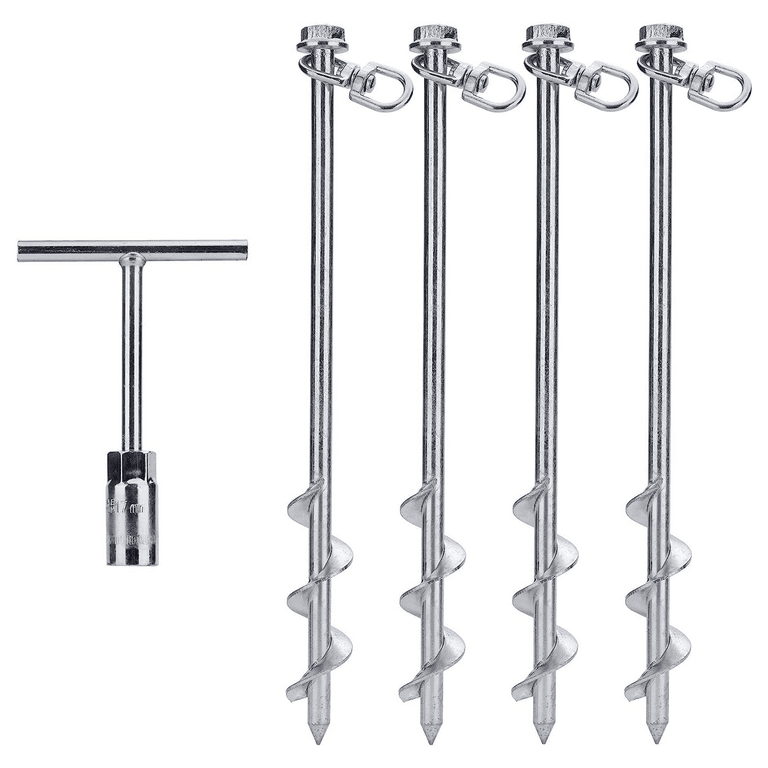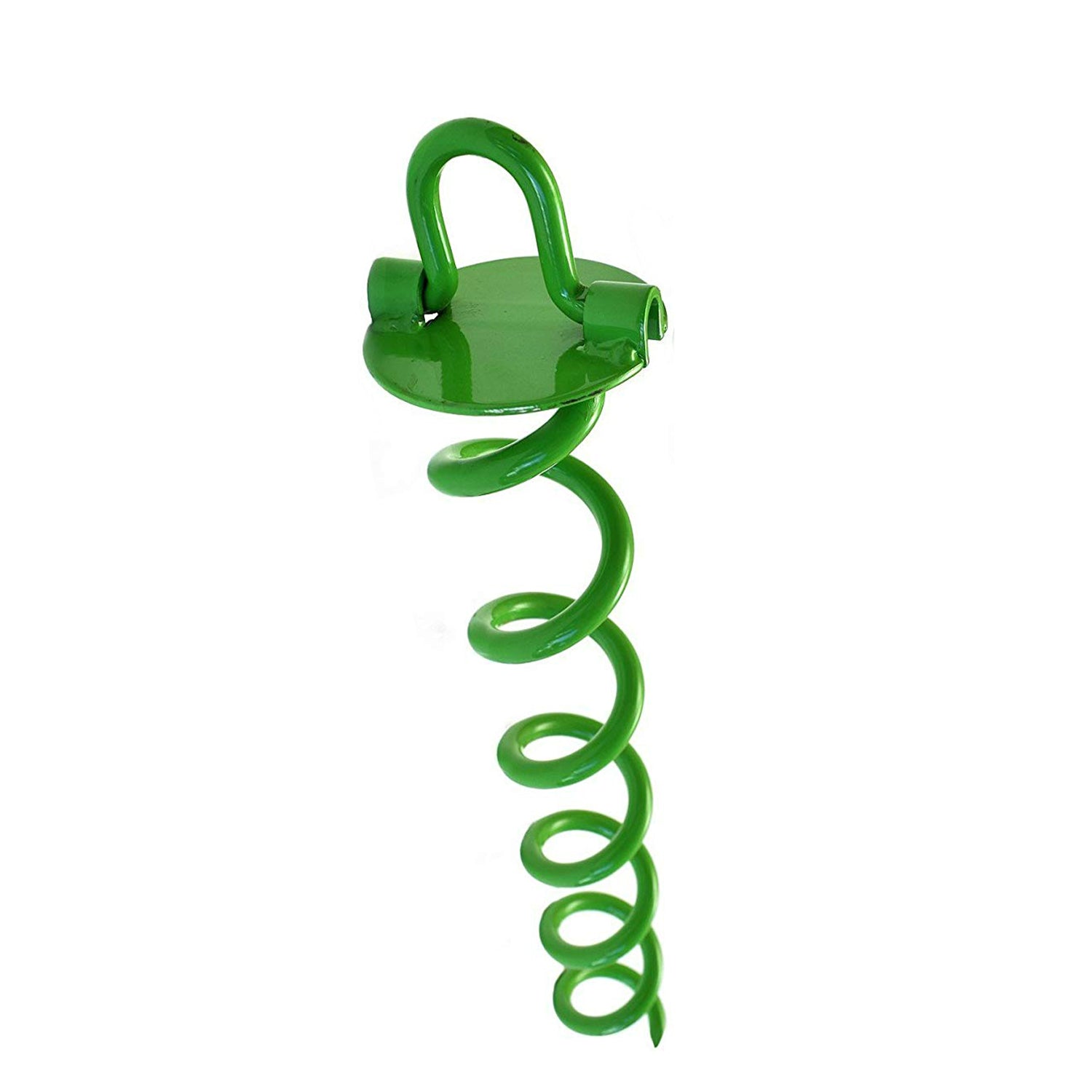The Best Ways to Install a Ground Anchor for Optimal Performance
The Best Ways to Install a Ground Anchor for Optimal Performance
Blog Article
Explore the Different Kinds of Ground Anchor for Your Following Project
From auger supports, which stand out in varied soil problems, to stake supports developed for short-lived installments, the choices are various. In addition, concrete and screw anchors present one-of-a-kind advantages in specific scenarios, while deadman anchors are tailored for applications requiring resistance to lateral pressures.

Auger Anchors
Auger supports are a preferred option in various building and landscape design jobs due to their unique style and reliable anchoring abilities. These supports consist of a helical screw-like shaft that is driven into the ground, enabling a safe and secure hold. The spiral design helps with very easy installation and maximizes resistance against side pressures, making auger supports particularly efficient in applications such as secure fencing, short-term frameworks, and disintegration control.
The installment process of auger supports is relatively straightforward. Auger anchors can be quickly gotten rid of and recycled, which includes to their cost-effectiveness and sustainability.
One of the substantial advantages of auger supports is their capacity to distribute lots evenly throughout the surrounding dirt, lowering the risk of soil disruption and reducing ecological impact. In addition, they are less vulnerable to loosening or heaving gradually contrasted to typical anchoring techniques. Auger supports are an outstanding option for tasks requiring trusted and long lasting anchoring remedies.

Risk Anchors
When it pertains to securing structures in a selection of outside applications, risk anchors offer a dependable and straightforward remedy. These supports are generally built from sturdy materials such as steel or aluminum, developed to endure ecological tensions while giving optimal stability. Their simple design allows for fast setup, making them a suitable option for short-term or permanent anchoring requirements.
Risk supports are particularly valuable in protecting camping tents, covers, and other light-weight frameworks against wind and weather condition. They work by being driven into the ground at an angle, creating a solid hold that withstands pull-out pressures - Ground Anchor. The efficiency of stake supports depends on several aspects, including dirt kind, dampness web content, and the angle of setup
For added safety and security, numerous risk anchors come with accessory points for ropes or straps, permitting for stress changes as required. In applications such as landscape design or building, they can efficiently maintain devices or structures on uneven surface. Generally, stake supports give a versatile and affordable service for protecting various outdoor installations, making them a favored option for professionals and do it yourself enthusiasts alike.
Concrete Anchors
Concrete anchors supply a robust option for securing frameworks to concrete surface areas, making certain stability and safety in various applications. These supports are important for jobs varying from residential constructions to large-scale industrial setups. They come in different kinds, including expansion anchors, sticky anchors, and undercut supports, each developed for certain lots needs and ecological conditions.
Sticky supports use high-strength epoxy or material to bond the anchor to the concrete, offering superior load-bearing capabilities, specifically in cracked concrete circumstances. Undercut supports create an one-of-a-kind form within the concrete, providing remarkable holding power, especially in applications where tensile tons are common.
When implemented appropriately, concrete supports dramatically enhance the architectural stability of different jobs, making them crucial in modern building methods. Understanding the specific needs of your task will certainly help in selecting the best type of concrete anchor for the job.
Screw Anchors

Screw supports are a flexible attaching option that can be efficiently employed in a selection of applications where traditional concrete anchors might not suffice. These supports contain a helical layout that enables them to be quickly driven right into the ground, making them ideal pop over to this web-site for usage in soil and other find out this here substratums. Their unique framework provides exceptional holding power and resistance to pull-out pressures, making them ideal for countless projects, from landscaping to structural assistance.
One of the main advantages of screw anchors is their convenience of installment. They need minimal equipment and can commonly be set up without the demand for excavation, which conserves both time and labor expenses. Additionally, screw supports can be eliminated and recycled, offering a sustainable solution for temporary applications.
Screw supports are particularly beneficial in areas where soil conditions are testing, such as sandy or loosened soils. Their capacity to be installed at differing depths allows for modification based upon particular job needs. In general, screw anchors provide a reputable and efficient anchoring technique, making them an exceptional selection for engineers and professionals seeking effective remedies for their tasks.
Deadman Anchors
Deadman supports function as a durable solution for supporting frameworks in tough problems, especially where traditional anchoring techniques may fail. These supports consist of huge, hefty objects buried underground, which develop resistance against lateral pressures. The style generally entails a horizontal element, such as a block of concrete or a steel plate, hidden in the dirt, to which wires or bands are affixed.
The effectiveness of deadman supports depends on their ability to distribute loads over a larger area, decreasing the risk of failure in unstable Visit Your URL dirt problems. They are specifically helpful in applications such as preserving wall surfaces, short-term frameworks, and slope stabilization, where soil motion can jeopardize the stability of the structure.
Setup of deadman anchors needs careful planning to ensure they are put at the right deepness and positioning, optimizing their load-bearing ability. While they might require even more labor and product than light-weight supports, their integrity in unfavorable conditions makes them invaluable for long-lasting tasks. In addition, deadman supports are versatile and can be adjusted to various applications, making them a best choice for engineers dealing with one-of-a-kind challenges in their projects.
Verdict
Auger anchors succeed in diverse soil conditions, while risk anchors match momentary applications. For concrete surfaces, growth and sticky supports give reliable alternatives, and screw supports use adaptability in tough surfaces.
In addition, concrete and screw supports present distinct advantages in certain situations, while deadman anchors are customized for applications calling for resistance to side forces - Ground Anchor.Auger supports are a popular selection in various building and construction and landscape design tasks due to their special style and reliable securing capabilities. They come in different types, including development anchors, sticky supports, and undercut supports, each created for particular lots needs and ecological conditions
Adhesive supports make use of high-strength epoxy or material to bond the support to the concrete, using remarkable load-bearing abilities, especially in cracked concrete situations. Overall, screw anchors supply a reputable and efficient anchoring technique, making them an excellent choice for contractors and designers looking for effective services for their jobs.
Report this page